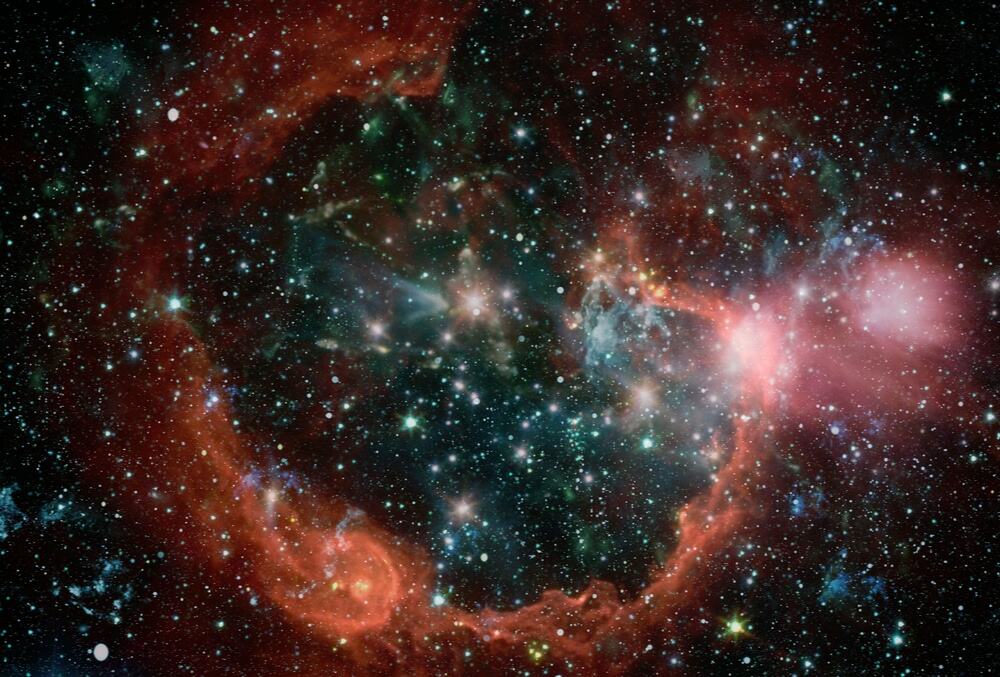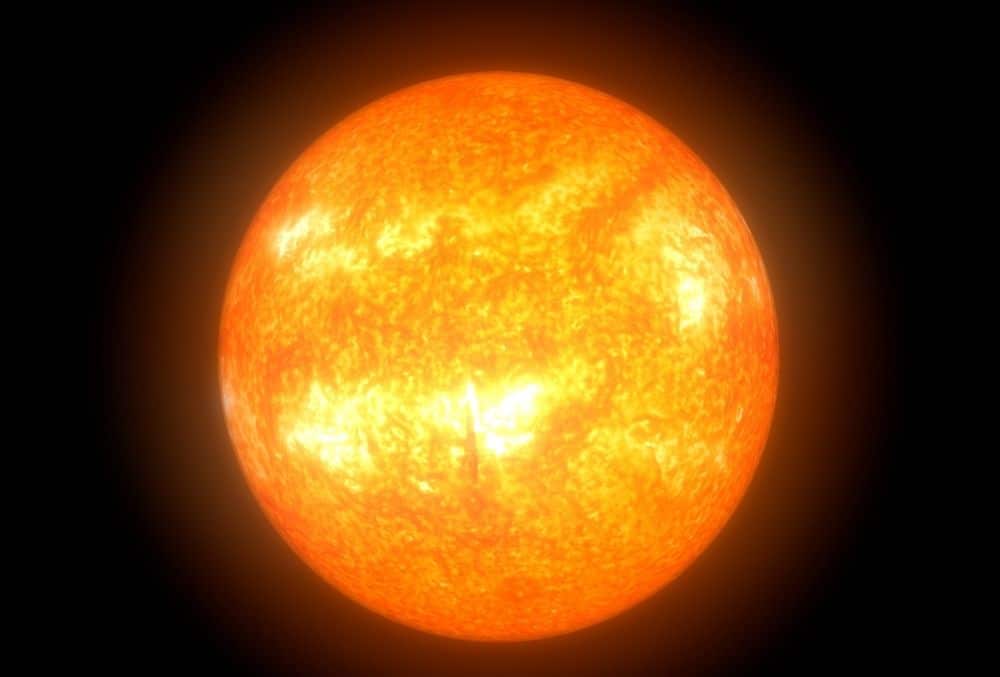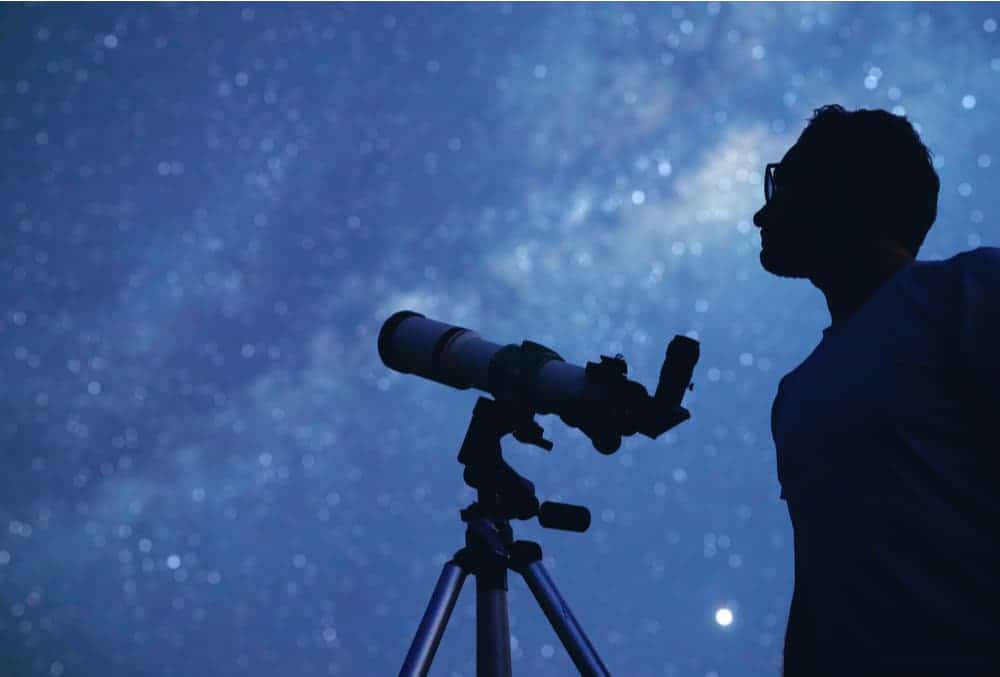Space is a vast and mysterious place that we still barely understand. In our solar system, we only have one star – the Sun. But there are countless trillions of stars in the universe, all of different sizes and densities.
But just what color are stars, exactly? This is actually a very interesting question and one that doesn’t really have a set answer. Luckily, I’ve gotten the confusing part out of the way for you.

This article will examine color stars and the reasons for their different colors.
Not only that, but I’ve also gone over the different types of stars out there, so you know the differences between them and which stars are which colors.
Ready? Then let’s get started!
Contents
What Color Are Stars?
To understand what color stars are, we first need to know what stars are at all.
A star is an astronomical object made of plasma. They are held together by their own gravitational field, which keeps their superheated gases in a spherical shape. The reason stars shine so brightly is because of the burning hydrogen and helium that make up most stars.
If you look up at the night sky, most of the stars you see will appear white or slightly yellow.
However, if you look at the Sun (disclaimer: I don’t recommend looking at the Sun), it seems to be a bright yellow.
Other stars can look red or orange, or even a bright blue.
So why are stars different colors?
Stars appear in different colors depending on their temperature. Stars are incredibly hot, with the hottest stars reaching temperatures of over 40,000 K (or more than 71,000℉). The hotter a star is, the brighter it will appear.
The hottest stars will appear blue and white, while cooler stars will have a more yellow or orange glow to them. The coolest stars are red, and their temperatures are usually a more modest 4000 K (around 6740℉).
Stars also have different colors depending on their stage in life, and stars don’t follow a linear path of hot to cold.
As stars change their size, their heat changes too. However, this doesn’t mean that big stars are always hotter, and the same goes for small stars. While at their largest, stars begin to lose heat, their resulting behavior can either leave a star cold or at its hottest.
A blue dwarf is a star that has nearly completely burned out after compressing from a red giant. Neutron stars, meanwhile, are the final stage of life for some red supergiants and are among the hottest stars in the entire universe.
Other things can also affect the appearance of stars. The Sun, for example, appears yellow.

However, in space, the sun would look white; our atmosphere and pollutants in the air change the Sun’s color and add the yellow glow we’re used to seeing. Distance also makes a difference, as different wavelengths of light travel more easily.
Generally speaking, a star’s color will depend on its temperature. Stars don’t stay the same color throughout their entire lives, however, and they will go through a variety of different colors during their lifespan.
How Do Stars’ Color Change?
As stars age and change temperature, their colors change. Most stars follow a fairly set life cycle and change color and size several times throughout their lives.
Stars can live for anywhere from 10 million to 10 billion years (or more!), so it’s no surprise that they undergo some changes throughout the millennia.
Stars start off as collections of floating gas and debris, drifting through the emptiness of space. This cloud of dust and gas is known as a nebula.
When this cloud condenses and ignites, it becomes a star. Depending on its size, it will become an average star or a massive star. These stars will shine white or blue and are some of the hottest in the universe.
From there, after millions of years, the star will begin to expand. Average stars will become red giants, while massive stars will become red supergiants. These, as the name suggests, are bright red.
They have cooled off a lot after growing, and they will continue to use up their fuel until they run out. Smaller stars use less fuel than larger stars, and will continue to shine for billions of years longer than their larger counterparts.
What happens next depends on the size of the star. Once the star runs out of fuel to burn, it will move on to its next stage.
Regular red giants will continue to burn the last of their fuel and cool down. From there, it will go through the ‘planetary nebula’ phase, where the last of the star’s plasma is shed and dissipates into space. After that, it will shrink into a white or blue dwarf star, where it will eventually stop glowing when it runs out of heat.
Our Sun is due to become a red giant star in the next 5 billion or so years, so make sure to mark your calendar.
Red supergiants, on the other hand, end up with a much more explosive transformation. After a massive star expands into a supergiant, it becomes much less stable. Its materials become more aggressive and energetic, building up until the star explodes into a supernova.
This is a bright white, brighter than even the hottest stars. Once the supernova is over, you have one of two options.
First of all, the star has become a neutron star. These are the collapsed core of the supergiant, which has become a small and incredibly dense star. They glow a bright white due to the intense heat caused by their compression.
However, you can’t actually see neutron stars properly – they emit X-rays, which are invisible to the human eye. A supernova could also lead to a black hole if the exploding star were particularly huge.
Black holes are, fairly obviously, completely black. This is because they are so dense that all visible light is absorbed into them. In fact, they are less black and more just in the absence of light.
What Different Types of Stars Are There?
Aside from color differences caused by age, there are also several other factors that can affect a star’s color. Certain types of stars have their own color separate from their temperature and often have links to a critical point in the star’s lifespan.
White and blue dwarf stars, for example, are small stars that have almost entirely burned through their fuel and are near to death. Red dwarfs are actually hotter than white and blue dwarfs and are still producing heat.
Meanwhile, these dying stars have already stopped undergoing fusion at their core. Red giants, as the name suggests, are large red stars that have expanded dramatically.
When a star begins to expand, it signals a major point in its life cycle. Red giants will expand and then begin to become denser, eventually becoming a red dwarf. The star will continue to burn its fuel from this point until it runs out and dies.
While not actually a star, shooting stars are another example of how heat impacts an object’s color. Shooting stars (also known as meteorites) are chunks of a meteor, comet, or some other form of space debris.
As they enter the Earth’s atmosphere, the shooting star heats up and begins to disintegrate. The burning particles breaking off of the meteorite are what give it its trail and bright white glow.
Neutron stars take their color to a whole new level, as well as out of the limitations of human eyesight. While their super-high temperature would mean that they are white, the X-ray waves they emit are invisible to the human eye.
Likewise, black holes (the last dying state of a collapsed supergiant) are black because they absorb all light that the human eye can see.
How Can I See These Stars For Myself?
If you’re interested in seeing the different colors of stars for yourself, the best way to do so is with a good astronomical telescope. A high-quality telescope is worth spending a bit more on, as it will give you the distance and clarity you need to properly observe stars in their different states.

The closest white dwarf star to Earth is Sirius B, which is around 8.6 light-years away. Although it is visible from Earth without a telescope, using one will allow you to properly make out this small star’s hot white color.
To see the nearest red giant star, you’ll need to turn your sights to the ominously named Gacrux. While this star is a large 88.6 lightyears away from Earth, its massive size makes it visible in the southern night sky.
You can even use a telescope to spot nebulae in the right conditions – the Helix Nebula (a dying star that is 700 lightyears away from us) can be spotted on a clear night, especially during the new moon.
Its gorgeous colors are truly a sight to behold and are a great way for amateur astronomers to see the beautiful spectrum of colors that a star can hold.
Just bear in mind that the Helix Nebula, as a dying star, has less surface light than other stars and can be tricky to see through a hazy and unclear sky.
Final Thoughts
So now you know a bit more about what color stars are, as well as what makes them that way. I hope you enjoyed learning about some of the mysteries of our universe.
If you like to use a telescope to stargaze, try looking out for some of the different color stars out there. Whichever color stars you can find, you’ll know a lot more about them and what type of star they are.
Even if you don’t have a telescope, many stars are visible to the naked eye regardless of their stage of life. It may be trickier to see dimmer stars, but there are plenty of stars close enough to see without one.
Regardless of how you’ll see them, all that’s left now is for you to get out there and look to the stars. Have fun!

